Just a little word first about the word “leger” as some choose to spell it “ledger”, but for many that is a type of accounts book. The word leger comes from the French “léger” to mean light or more probably “avoir la main légère”, meaning “with a light hand”. I like to think so, but wait until we get to the beefier rods.
Swing Tips
Before going onto quiver and feeder rods, let us take a look at the swing tip rod, which many would say preceded the quiver.
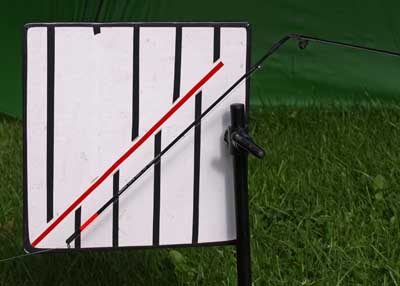 Hardly anyone makes these rods any longer, the fashion for them peaked in the 1970s and by the 1980s were being replaced by today’s quiver rods. Which is a pity because on the right day and faced with a shoal of skimmer bream on a lake they are the most devastating tool in the angler’s armoury. If you find a good one going relatively cheap, snap it up an give it a go.
Hardly anyone makes these rods any longer, the fashion for them peaked in the 1970s and by the 1980s were being replaced by today’s quiver rods. Which is a pity because on the right day and faced with a shoal of skimmer bream on a lake they are the most devastating tool in the angler’s armoury. If you find a good one going relatively cheap, snap it up an give it a go.
They used to be around 10 foot long with a swing tip (so named because it swings on a piece of rubber tube from the end of the rod) to which were attached a couple of eyes. With the line threaded through and cast out, the swing tip would sit at an angle and any bites were signalled by a raising or lowering, changing the angle of the tip. The main problem was that you had to protect them from the wind and wave action.
They were replaced by spring tips, attached by a spring, and then by today’s quiver tipped rods, but even these fall into different categories.
Light Bomb / Winklepicker rods
I don’t know where the “Winklepicker” name actually came from, but it features heavily in Shimano’s range, whilst others call them “bomb” or “light bomb” rods. In principle, they are just a very light legering rod made to cast either just weights or very light feeders across small rivers or canals or not too far out into lakes. They are on the shortish side of feeder/quiver rods being no longer than 10 feet usually.
They are really useful and on a winter’s day can catch many a fish that otherwise you would not stand a chance of catching. One method is by stalking where the shorter rod comes into its own. Try walking up a river, for example, feeding a number of swims with mashed bread, particularly those with tree branches and roots at the bottom end.
Then by starting at the beginning fish each one with a short bomb rod and with bread flake as a hookbait for no more than 20 minutes per swim. If you catch a fish, move on straight afterwards. You can even get such a short rod into tight swims between the trees where a longer rod just wouldn’t go.

Don’t be put off by some rod’s model name, e.g.: Carp Feeder. I have this very nice Shimano Beastmaster 9–11 ft Carp Feeder that is perfect for such stalking for chub and even barbel, how do the fish know? In fact, one 10ft rod I have has two tops, one a quiver and the other meant for swing-tipping, but on one occasion I used the swing tip section without the tip to trot a float underneath some low trees and caught a handsome little bag of perch. This was impossible with a 13foot float rod.
Medium/Heavy Feeder rods
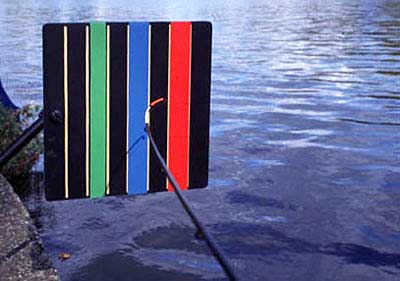 These are perhaps the mainstay of the quiver/feeder rod market. Being 11-12 feet usually, but occasionally reaching to 13 feet, they are mostly used by the matchmen for casting feeders up to some of the largest sizes. Essentially, the shorter 11 foot ones will be more useful on lakes for roach, bream, and tench with feeders weighing up to 1oz whilst the longer 12+ foot rods will be used for punching the heavier feeders across the larger rivers like the Severn, Trent, and Thames.
These are perhaps the mainstay of the quiver/feeder rod market. Being 11-12 feet usually, but occasionally reaching to 13 feet, they are mostly used by the matchmen for casting feeders up to some of the largest sizes. Essentially, the shorter 11 foot ones will be more useful on lakes for roach, bream, and tench with feeders weighing up to 1oz whilst the longer 12+ foot rods will be used for punching the heavier feeders across the larger rivers like the Severn, Trent, and Thames.
Of course, there are no set rules and you’ll always find a rod that will do more than you expect, but that would be up to you and the circumstances with which you wanted to fish it. Like with my Beastmaster 9-11foot, though, you can buy rods that go from 11 – 13 feet, or 12 – 13½ feet and any other combination depending on how much you want to spend.
What you will find is that there are more variations in the quiver/feeder rod market than in the usual float rod market. In my own armoury, I have just 3 float rods now, but 7 feeder rods and all for different purposes. But let’s look at the biggest and heaviest rods.
Method Feeder rods
These will almost certainly be in the 12-14 foot bracket and made to cast the proverbial brick.
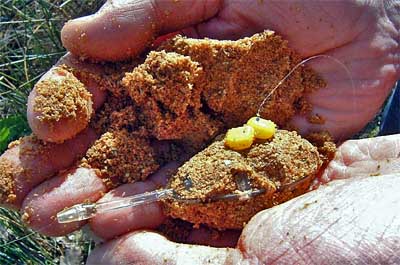
Where these come into their own are on the really big lakes and reservoirs such as Clattercote in Oxfordshire where Fishingmagic holds its annual grudge match. With waters like Clattercote you need to hit the main channel 60-80 yards out with a ball of groundbait and the method feeder rods delivery it. You might, with skill, get away with a shorter, less powerful rod such as Stu Dexter (Coarse Fisherman magazine’s editor) uses, but like I say, that’s with skill and he has it.
On the river too, these can deliver the largest of feeders at distances other anglers can only dream of. Holding the feeder out there is often a different matter though and that comes down to the technique of fishing it. Most of the time, method feeder type rods are used to fish the commercial-style carp fisheries where large balls of feed are required to be cast complete with the hookbait hidden inside.
Variations on the above
There is a trend these days to sell specimen rods that have two tops, one for normal fishing with maybe a straight lead and possibly a boily or meat as a hookbait. The other top is a quiver tip that can be utilised as a quiver/feeder rod. There are no set rules.
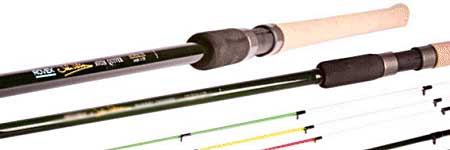 The rod that started this trend many years ago was the John Wilson Avon/Quiver rod. That is an 11 foot long specimen rod that came with a spare quiver top, but on the early ones, the quiver tip was fixed in place. If you broke the quiver, it meant having it repaired with a new solid fibre-glass quiver (known as a donkey top) with all new (or recovered) rings. These days, the JW Avon/Quiver is supplied with separate quiver tips so not only are they easy to replace, you can choose which strength of tip you want to use. This might seem like a plug, but if ever a rod deserved it, this one does and I always said that the only rods many an angler needs are a float rod and a JW Avon/Quiver; with those he would cover 90% of his angling needs.
The rod that started this trend many years ago was the John Wilson Avon/Quiver rod. That is an 11 foot long specimen rod that came with a spare quiver top, but on the early ones, the quiver tip was fixed in place. If you broke the quiver, it meant having it repaired with a new solid fibre-glass quiver (known as a donkey top) with all new (or recovered) rings. These days, the JW Avon/Quiver is supplied with separate quiver tips so not only are they easy to replace, you can choose which strength of tip you want to use. This might seem like a plug, but if ever a rod deserved it, this one does and I always said that the only rods many an angler needs are a float rod and a JW Avon/Quiver; with those he would cover 90% of his angling needs.
The model was so successful that every manufacturer now makes a specimen rod and supplies it with a spare quiver section. Some get quite beefy too, with test curves of the main section running to 2lbs and over. If this is going to be your only specimen rod try to think low, 1¼ – 1½ lbs test curve and not too long either.
Quiver Tips
Just a few words on the quiver tips that might be supplied with these quiver/feeder rods.
With many rods you will be supplied with maybe 2 or 3 different tips, some supply 4 even. They may be marked, they may not, but they are nearly always colour coded by painting the ends of the tips. However, there are no colour coding standards set between the different manufacturers and – all the tips have different diameters so it’s not possible to interchange one manufacturer’s tips with another’s rod.

The tips are usually made from solid fibre glass, the softest material, and come in test curve sizes such as ½ oz, 1 oz and 2 ozs, as an example. In such circumstances you might find the ½ oz will be useful on lakes on the stillest of days picking out the most delicate of bites. The 1oz for lakes and medium flowing rivers and the heaviest tip for faster flowing rivers, but again, there are no set rules and you might on occasions, want an even stronger tip.
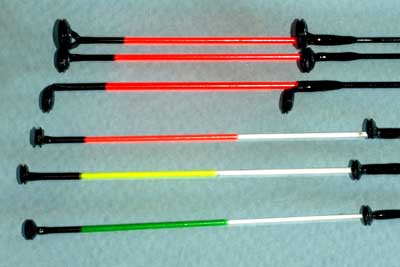 Not all manufacturers state the strength on their tips and rely instead on colour coding. You would have to decide for yourself what stregth of tip to use on a given day to suit the conditions. Whichever tips you have, be sure they’re all painted brightly with dayglo colours so that you can see every slight movement of them; you don’t want to miss a precious bite.
Not all manufacturers state the strength on their tips and rely instead on colour coding. You would have to decide for yourself what stregth of tip to use on a given day to suit the conditions. Whichever tips you have, be sure they’re all painted brightly with dayglo colours so that you can see every slight movement of them; you don’t want to miss a precious bite.
Some tips are made from solid carbon fibre and although these might be given the same test curve strength as their fibre glass equivalent, the action of them is quite different in that they appear much stronger. Their use is usually intended for rivers only, but you would only find out by trial and error as to when and where they could be useful.
Whichever quiver/feeder rod you buy, make certain that you can get hold of the same diameter quivers to replace broken ones and you will break one or two, or three. It is possible to adapt other makes, fatter ones can be slimmed down with wet and dry paper and slimmer ones can be painted with resin paint (only the very lightest of coats) to fatten them to fit.
All You Need to Know About – Swimfeeders










